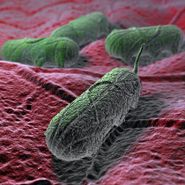The things in your carpet that could make you sick
The average amount of bacteria found in a homeowner’s carpet is 200,000 organisms per square inch. This amount is 4,000 times more than that found on an average homeowner’s toilet seat! Vacuuming alone is not effective in removing the skin cells, food particles, and pollen that these bacteria feed on.
Avoiding wearing shoes in the house and using indoor and outdoor mats will help reduce these bacteria. In conjunction, a semi-annual, high-temperature carpet cleaning service will help eliminate harmful carpet bacteria that accumulate over time.
Avoiding wearing shoes in the house and using indoor and outdoor mats will help reduce these bacteria. In conjunction, a semi-annual, high-temperature carpet cleaning service will help eliminate harmful carpet bacteria that accumulate over time.



